Camera mount adapters let you use different lenses with your digital camera body, but compatibility depends on several key factors. You'll need to match your camera's mount type (like Canon EF, EF-S, M, or R) with the correct adapter for your desired lens. Consider your sensor size, as it affects focal length and image quality. While basic adapters enable mounting, premium options maintain autofocus and electronic features. Understanding the full scope of adapter specifications will guarantee your perfect match.
Understanding Mount Types and Standards
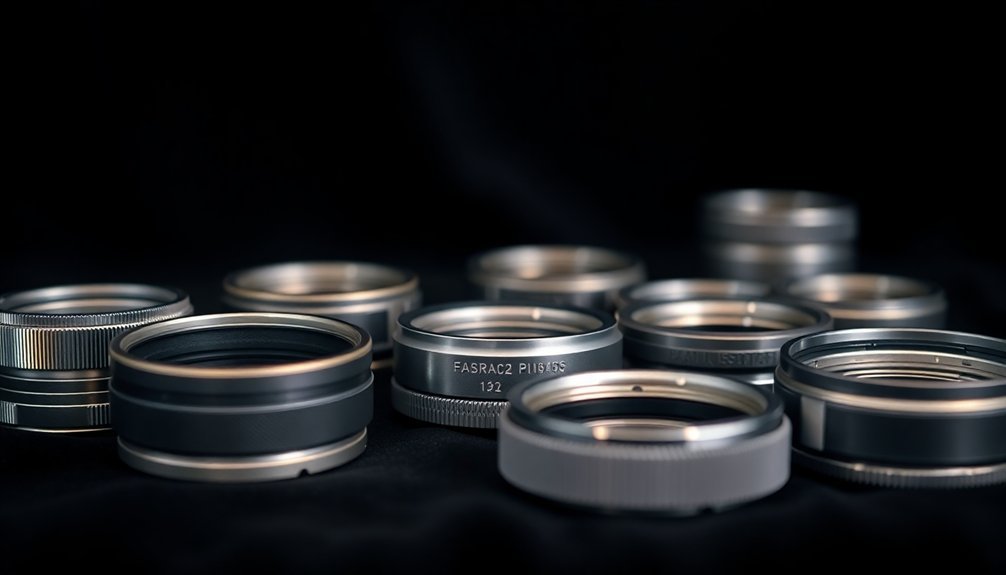
When diving into camera lens compatibility, understanding mount types and standards is essential for any photographer.
Canon cameras feature four distinct lens mount systems: EF, EF-S, M, and R System, each designed for specific camera bodies. You'll find the lens mount index on your camera's front, which helps you identify compatible lenses through visual indicators like red circles, white squares, or red lines.
For APS-C DSLR cameras, look for the red circle or white square mount indicators, while the red line denotes compatibility with EOS APS-C R System and full-frame R System mirrorless cameras.
If you're planning to use lenses across different mounts, you'll need lens adapters for proper mount conversion. Understanding these mount types directly impacts your shooting experience and guarantees you're making informed decisions about lens compatibility.
Camera Sensor Size Impact on Adapter Selection
Before selecting a lens adapter, you'll need to understand how your camera's sensor size affects lens performance. Your camera sensor size directly impacts lens compatibility and how your adapted lenses will perform, especially regarding focal length and field of view.
- Full-frame cameras maintain native focal lengths, giving you the widest possible field of view.
- Crop-sensor cameras multiply focal lengths (e.g., 50mm becomes 75mm).
- EF-S mount lenses aren't compatible with full-frame sensors, even with adapters.
- Lens design and sensor dimensions affect vignette effects and distortion.
- Consider image degradation risks when matching lens types to different sensors.
Remember that adapter selection isn't just about physical fit – it's about optimizing your lens's performance with your specific sensor.
Understanding these relationships helps you avoid compatibility issues and achieve the best possible image quality with your adapted lenses.
Essential Mount Adapter Measurements
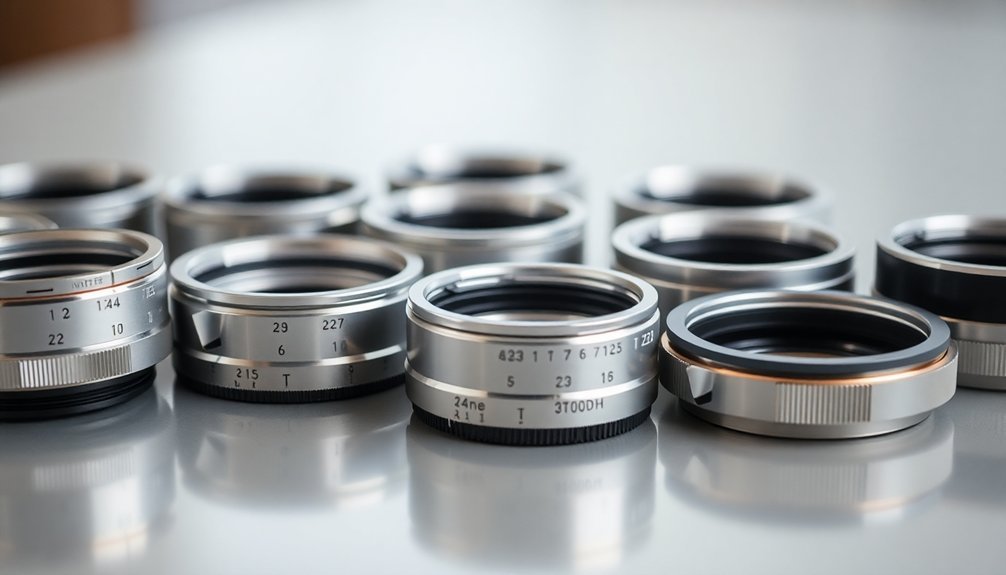
Understanding sensor size leads naturally to precise adapter measurements, which determine proper lens-to-camera compatibility.
When selecting mount adapters, you'll need to focus on two vital measurements: the diameter and flange distance between your lens mount and camera sensor.
Your adapter's flange distance is particularly essential, as it affects your camera's ability to achieve proper focus. For example, if you're using a Canon EF to EOS R adapter, you'll want to verify the specifications match both your lens and camera requirements.
The adapter's thickness can impact your focal length and may require you to adjust your exposure settings.
Always check manufacturer compatibility charts before making a purchase. This guarantees your adapter meets the exact measurements needed for your specific lens-to-camera combination, preventing potential focusing or mounting issues.
Mechanical and Electronic Compatibility Factors
As you match lenses to cameras with adapters, mechanical and electronic compatibility become equally essential considerations. Understanding these factors guarantees your setup works seamlessly without risking damage to your equipment.
While mechanical compatibility focuses on physical fit, electronic compatibility determines how well your lens communicates with your camera body.
- Check manufacturer compatibility charts before purchasing lens adapters
- Verify that adapters support your desired features like autofocus and aperture control
- Consider whether you're comfortable with manual operation if electronic features aren't supported
- Look for adapters designed specifically for your mount combination (like Canon EF to Sony E)
- Confirm whether important features like image stabilization will function with your adapter
Image Quality Considerations With Adapters

When you add a lens adapter to your camera setup, you'll need to evaluate potential impacts on image sharpness, particularly with lower-quality adapters that can degrade optical performance.
Your choice of adapter will affect light transmission, where cheaper options might introduce unwanted light loss or vignetting that compromises exposure.
High-quality adapters with premium optical elements can help maintain your lens's native sharpness and minimize light loss, though they'll typically cost more than basic mechanical adapters.
Lens Sharpness With Adapters
The lens adapter you choose can greatly impact your image quality, particularly when it comes to sharpness.
When using adapters, you'll need to take into account several critical factors that affect your final images. Additional glass elements in adapters can introduce optical aberrations and affect your lens's performance.
- Select high-quality adapters to minimize distortion and maintain sharpness
- Watch for chromatic aberration and vignetting, which can increase with adapted lenses
- Evaluate the adapter's effect on your effective aperture and depth of field, especially in low light
- Verify proper alignment between your lens and adapter to prevent focus issues
- Test your specific lens-adapter combination to evaluate compatibility and sharpness
Light Loss Through Adapters
Many photographers don't realize that lens adapters can considerably impact their exposure settings by reducing light transmission to the sensor.
When using lens adapters, you'll typically experience light loss of 1-2 stops, which means you'll need to adjust your exposure accordingly.
The quality of your adapter directly affects image quality and sharpness.
While high-end adapters minimize optical aberrations, cheaper ones can introduce unwanted distortion.
If you're using adapters with built-in optics, particularly with the Canon EOS R System, you might face additional light loss, though these adapters can help resolve certain compatibility issues.
Before investing in an adapter, it's essential to test and evaluate your specific lens-adapter combination.
The amount of light loss varies based on the adapter's design and construction, with simpler designs generally performing better regarding light transmission.
Microscope-Specific Mount Requirements
When selecting a microscope adapter, you'll need to match your eyepiece diameter precisely to your camera's mount specifications, typically ranging from 23mm to 30mm depending on your microscope model.
You'll require specific mounting hardware, including the correct thread size or bayonet fitting, along with any necessary relay lenses or extension tubes for proper image formation.
Your camera's digital sensor dimensions must align with the microscope's image plane through the adapter to prevent vignetting and maintain ideal focus across the entire field of view.
Eyepiece Adapter Sizing Guide
Since microscope eyepiece adapters must fit precisely to confirm excellent imaging results, selecting the right size is essential for your camera mounting setup.
To find your perfect match, you'll need to measure your microscope eyepiece's outer diameter and verify compatibility with potential adapters.
- Check your microscope's manufacturer specifications for recommended adapter sizes
- Measure the eyepiece's outer diameter precisely – most range from 23mm to 30mm
- Look for adapters with adjustable fittings or rubber rings to accommodate minor size variations
- Consider adapters that offer smartphone connection or digital camera mounting options
- Verify mount specifications to confirm peak performance with your imaging equipment
Essential Mounting Hardware Components
Proper attachment of your microscope's camera mount depends on several essential hardware components working together seamlessly.
You'll need a precision adapter that matches your camera's specifications and aligns perfectly with your microscope's optical path. These mounts typically feature threaded connections or slide mechanisms designed for specific camera models.
When selecting your mounting hardware, you'll want to verify compatibility with both your microscope and camera systems.
Look for components that include focusing mechanisms, allowing you to fine-tune your camera's position for ideal imaging results.
Pay special attention to proper alignment, as incorrect positioning can lead to vignetting or compromised image quality.
Many modern adapters come with built-in adjustment features that help you maintain precise optical alignment throughout your imaging sessions.
Digital Sensor Compatibility Specs
Beyond basic mounting hardware, digital sensor specifications play a central role in determining the right microscope attachment setup.
You'll need to carefully match your digital sensors with the appropriate mount types to guarantee ideal compatibility and image capture quality.
- Check if your microscope requires specific C-mount or F-mount configurations
- Verify your sensor's pixel size aligns with the microscope's optical quality
- Confirm adapter requirements specific to your microscope's brand and model
- Match the back focal lengths between your sensor and microscope's optical path
- Review mounting thread specifications for a secure connection
Understanding these compatibility specs helps you avoid common mounting issues and guarantees your digital sensor performs at its best.
Consider both the physical mounting requirements and optical specifications to achieve precise focus and clear imaging results with your microscope setup.
Professional Mounting Solutions and Accessories
Professional photographers rely on three essential mounting solutions to maximize their creative potential: adapters, quick-release systems, and stabilizing accessories.
Among these, mount adapters are particularly transformative for your photography workflow. You'll find that premium options like Urth adapters, crafted from durable materials, enable seamless lens compatibility across different camera systems.
These photography accessories let you mount vintage lenses on modern digital bodies, expanding your creative options beyond standard offerings. While manual operation is required, you'll gain deeper insight into exposure control and compositional techniques.
The precision engineering guarantees professional use without compromising image quality. What's more, choosing an Urth adapter means you're contributing to environmental sustainability – they plant a tree for every adapter purchased, making your gear investment both practical and eco-conscious.
Troubleshooting Common Mounting Issues

While mount adapters offer expanded creative possibilities, they can present occasional challenges that need addressing.
If you're experiencing functionality issues, follow these essential troubleshooting steps to guarantee proper lens adapter performance:
- Always check mount types using the manufacturer's compatibility chart before purchasing any adapter.
- Align the red dots carefully when you attach or detach your lens to achieve a secure fit.
- Verify that your adapter is specifically designed for your lens-camera combination.
- Never force a connection if you feel resistance during mounting.
- Consult your user manual for model-specific guidance if problems persist.
Advanced Adapter Features and Specifications
Modern lens mount adapters offer sophisticated features that transform how you'll interact with your camera system.
Advanced lens adapters like the Control Ring Mount Adapter give you direct control over aperture and exposure through its innovative Lens Control Ring, while the Drop-In Filter Mount Adapter lets you swap filters internally rather than attaching them to the front of your lens.
Modern lens adapters revolutionize shooting by putting exposure control at your fingertips and enabling seamless internal filter changes during photography.
You'll find premium materials like hardened magnalium in Urth adapters, ensuring your equipment stays securely connected during shoots.
While these adapters operate manually, this actually enhances your creative control over your photography.
The broad compatibility of these adapters means you're not limited to modern lenses – you can experiment with vintage lenses across different camera systems, expanding your creative possibilities while maintaining professional-grade performance.
Frequently Asked Questions
Can I Use Any Lens on Any Camera With Adapter?
No, you can't use any lens on any camera, even with adapters. You'll need to check specific mount compatibility and understand that some features like autofocus might not work across different combinations.
How Do I Know What Lens Is Compatible With My Camera?
Check your camera's lens mount type on the body or manual, then look up your camera model on the manufacturer's compatibility chart. You'll find all the lenses that'll work directly with your camera.
How Do I Know Which Lens Adapter to Use?
You'll need to identify both your lens mount and camera mount types first. Check your manufacturer's compatibility guide, and look for adapters that connect these two mounts while maintaining your desired lens functions.
What Cameras Have EF Mounts?
You'll find EF mounts on Canon's DSLR cameras, including the EOS 5D, 6D, 7D, and Rebel series. Both full-frame and APS-C models use this mount, though some APS-C cameras also accept EF-S lenses.
In Summary
You've now explored the essentials of camera mount adapters and can confidently select the right one for your setup. Remember to match your sensor size, check mechanical compatibility, and verify electronic connections before making a purchase. Don't forget to take into account image quality impact and specific use requirements. With these tools and knowledge, you'll successfully adapt virtually any lens to your camera system.

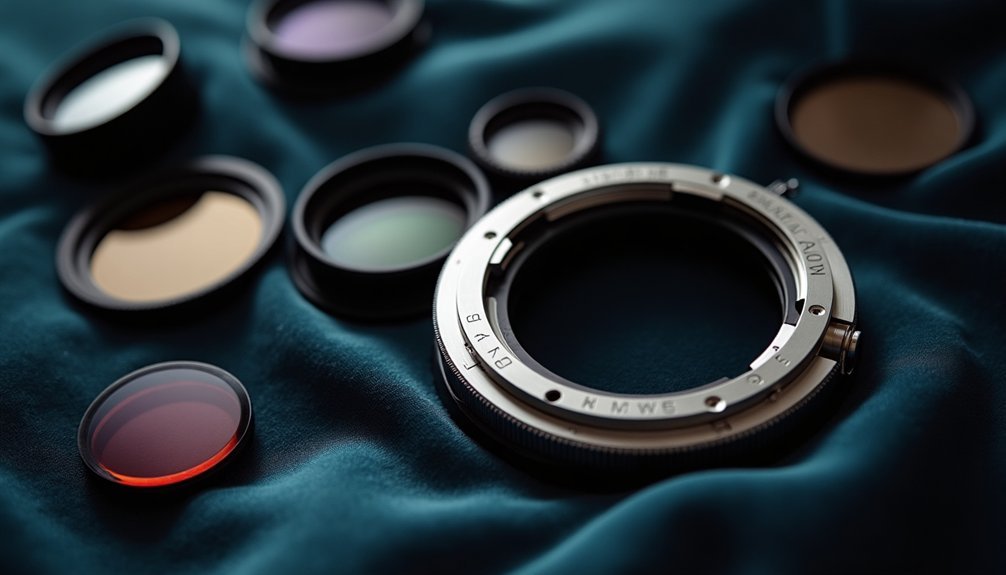
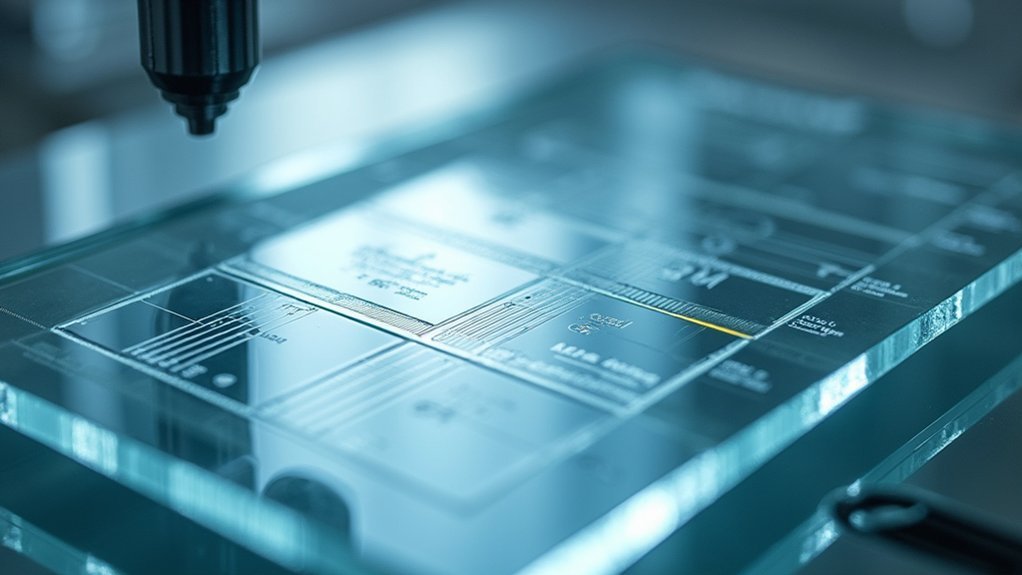
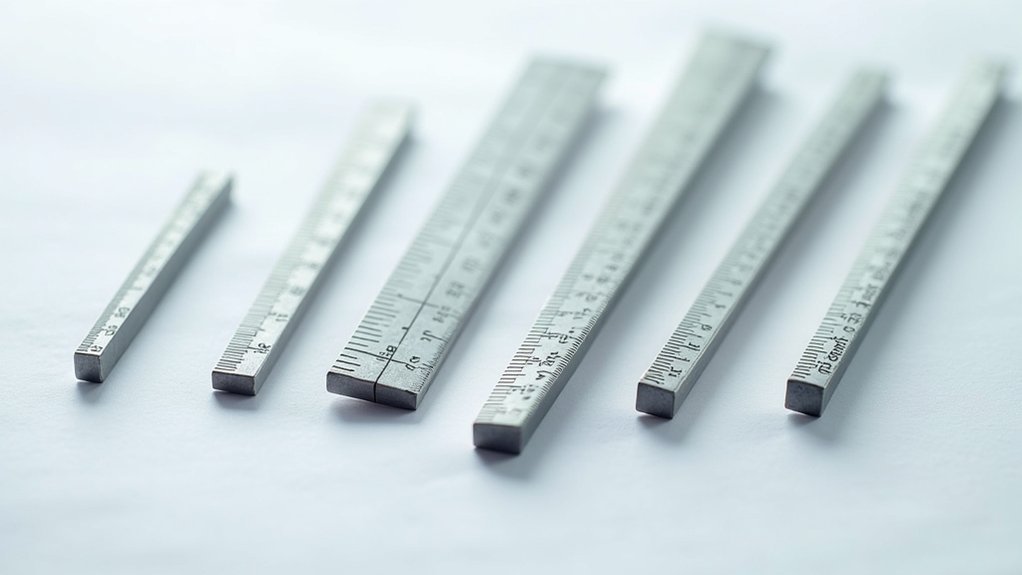
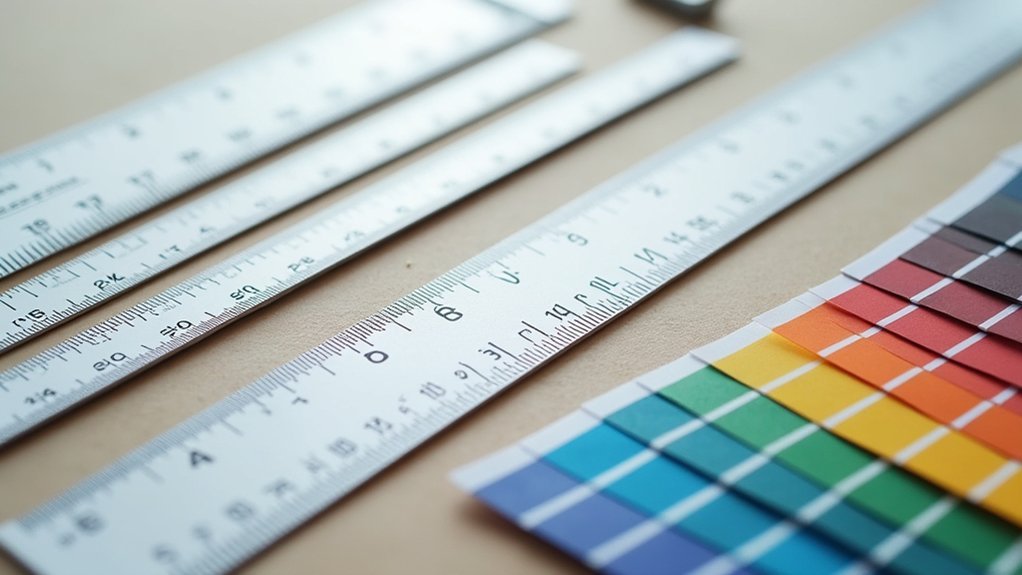
Leave a Reply